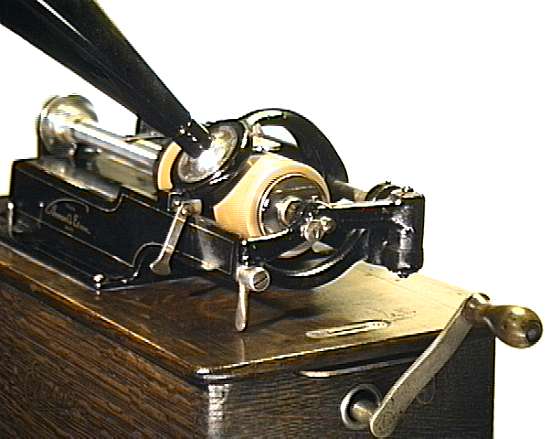
Some of these recordings date from 1904 and still sound amazingly good! An interesting playlist for Christmas Eve!
The phonograph was conceived by Thomas Edison on 18 July 1877 for recording telephone messages, his first test using waxed paper. In early production versions the recordings were done on the outside surface of a strip of tinfoil wrapped around a rotating metal cylinder. By the 1880s wax cylinders were mass marketed. These had sound recordings in the grooves on the outside of hollow cylinders of slightly soft wax. These cylinders could easily be removed and replaced on the mandrel of the machine which played them. Early cylinder records would commonly wear out after they were played a few dozen times. The buyer could then either bring the worn cylinders back to the dealer to be traded in as partial credit for purchase of new recordings, or have their surface shaved smooth so new recordings could be made on them. In 1890 Charles Tainter patented the use of hard carnauba wax as a replacement for the common mixture of paraffin and beeswax used on phonograph cylinders.
Early cylinder machines of the late 1880s and the 1890s were often sold with recording attachments. The ability to record as well as play back sound was an advantage to cylinder phonographs over the competition from cheaper disc record phonographs which began to be mass marketed at the end of the 1890s, as the disc system machines could be used only to play back pre-recorded sound.
In the earliest stages of phonograph manufacturing various competing incompatible types of cylinder recordings were made. A standard system was decided upon by Edison Records, Columbia Phonograph, and other companies in the late 1880s. The standard cylinders were about 4 inches (10 cm) long, 2¼ inches in diameter, and played about two minutes of music or other sound. -FROM WIKIPEDIA



No comments:
Post a Comment